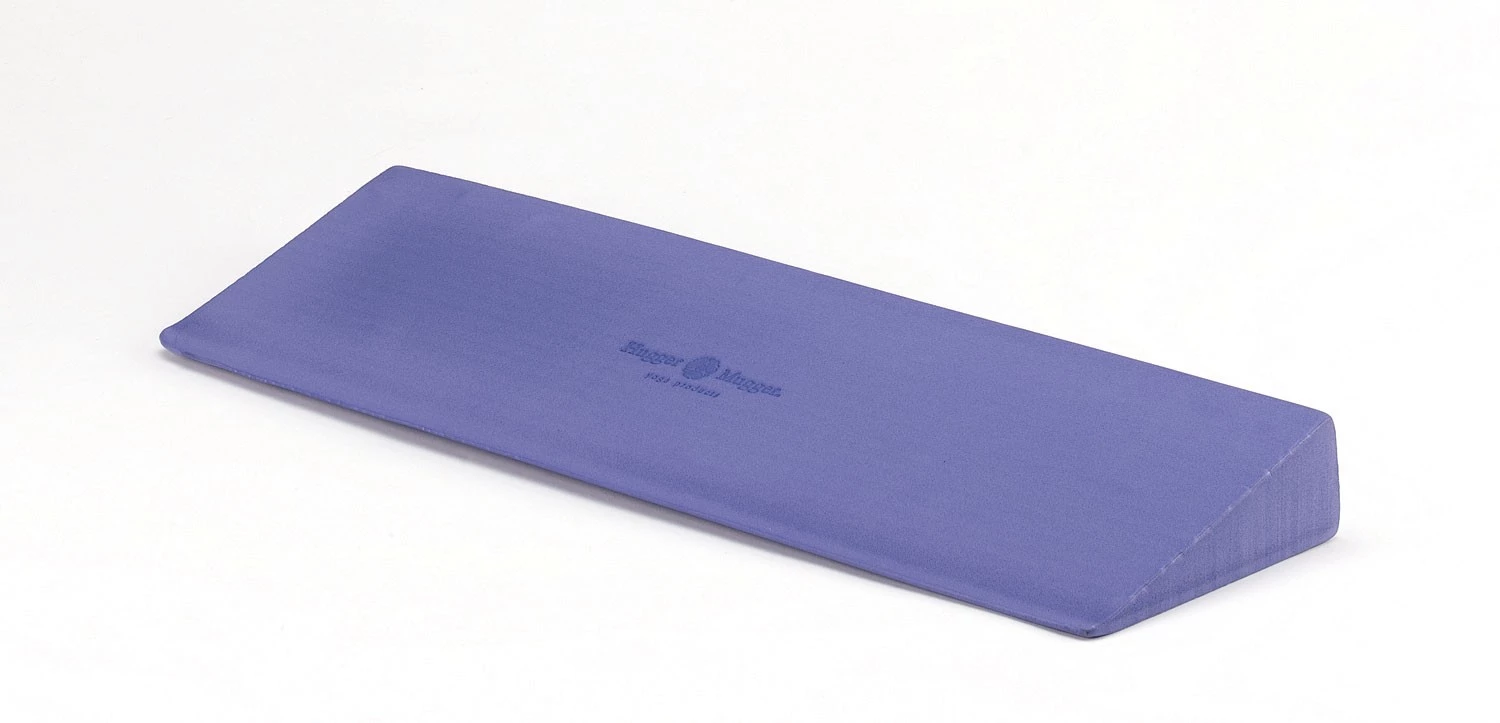Yoga Wedge: Save Your Wrists While You Open Your Upward Bow Pose

Upward Bow (Urdva Dhanurasana) is one of the emblematic yoga asanas. “Exhilarating” is probably one of the best descriptors for Upward Bow.
It ain’t easy, though. Upward Bow requires a bendy spine, shoulder joints constructed to allow for a fair amount of extension, and elastic quadriceps muscles. Not everyone is born with shoulder joints that can extend easily or bendy spines. However, those whose bodies are naturally more stable can still enjoy backbending in many forms: Setu Bandha Sarvangasana (Bridge), Urdva Mukha Svanasana (Upward Facing Dog) and Bhujangasana (Cobra), to name a few.

Wrists can pose a significant restriction in Upward Bow. People with carpal tunnel issues find the extreme bend of the wrist joint in Upward Bow to be a deal breaker. Even if you don’t have carpal tunnel issues, your wrists may not be built to extend to 90 degrees. The structure of your shoulder joints may also play a part. Whatever the cause of your Upward Bow challenges, a Yoga Wedge can be beneficial because using it decreases the extension angle in your joints.
Four Steps to Upward Bow Pose:
 1. Place a Yoga Wedge (cork or foam) on a nonskid Yoga Mat with the thick side toward the edge of the mat. This will help keep the wedge from slipping.
1. Place a Yoga Wedge (cork or foam) on a nonskid Yoga Mat with the thick side toward the edge of the mat. This will help keep the wedge from slipping.
2. Lie on your back on your mat with your head just below the Yoga Wedge. Bend your knees and place your feet on the floor.
3. Place your hands on the wedge with your fingers pointing toward you so that the heels of your hands are on the high side of the wedge. I like to turn my hands slightly outward. This helps keep your elbows shoulder-width apart, making raising up into Upward Bow easier.
4. Press down with your hands and feet, pressing the weight toward your feet so that your legs do as much work as your arms. Then, lift any amount into Upward Bow.
Your arms may or may not be able to straighten. This often has little to nothing to do with flexibility. More often than not, it has to do with the innate structure of your shoulder joints. Even though practicing Upward Bow with straight arms is often exalted as an indication of advanced practice, straight arms are more dependent on the skeleton you were born with than on the depth of your practice. Remember that asana practice is not about accomplishing incredible feats. Instead, it’s about connecting fully with each moment of your experience. Using a Yoga Wedge or yoga blocks might just help you feel more accessible and at ease in your pose, and that’s what practice is about.
Also, read...
Upside-Down Yoga: Inversions for Healthy Lungs and Heart
How to Bend Forward Without Stressing the Spine
Picture Perfect Posture: Tadasana (Mountain Pose)
Related courses

Charlotte Bell began practicing yoga in 1982 and began teaching in 1986. She was certified by B.K.S. Iyengar in 1989 following a trip to Pune. In 1986, she began practicing Insight Meditation with her mentors Pujari and Abhilasha Keays. Her asana classes blend mindfulness with physical movement. Charlotte writes a column for Catalyst Magazine and serves as editor for Yoga U Online. She is the author of two books: Mindful Yoga, Mindful Life, and Yoga for Meditators, both published by Rodmell Press. She also edits Hugger Mugger Yoga Products’ blog and is a founding board member for GreenTREE Yoga, a non-profit that brings yoga to underserved populations. A lifelong musician, she plays oboe and English horn in the Salt Lake Symphony and the folk sextet Red Rock Rondo whose 2010 PBS music special won two Emmys.



